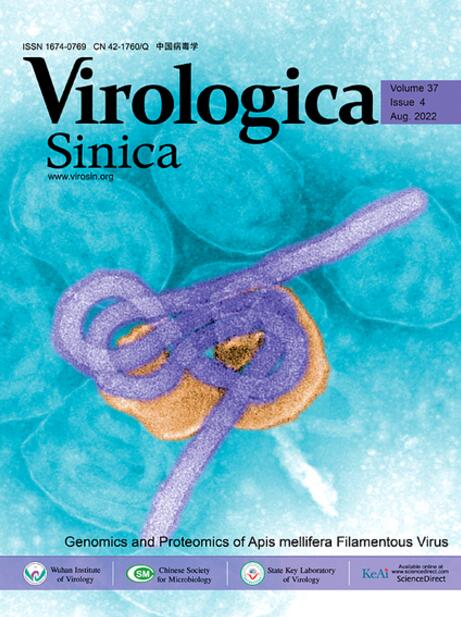Epidemiological and genomic surveillance of influenza A virus (pdm09 H1N1 and H3N2) strains from 2017 to 2025 in Tianjin, China
IF 4
3区 医学
Q1 Medicine
引用次数: 0
Abstract
Influenza A virus (IAV) remains a global public health concern, causing influenza-like illness and severe respiratory tract infections. Two major subtypes, A/pdm09 H1N1 and A/H3N2, circulate globally, and their epidemics are influenced by multiple factors, especially during the COVID-19 pandemic. Based on data from the National Influenza Surveillance Program in China, we analyzed the epidemiological and genomic data in Tianjin collected from 2017 to 2025. A total of 77,473 throat swabs were collected, of which 9144 were IAV-positive. The A/pdm09 H1N1 and A/H3N2 lineages exhibited distinct epidemics across different influenza seasons, with a decline in cases observed during the COVID-19 pandemic. We sequenced the genomes of 128 A/pdm09 H1N1 and 113 A/H3N2 clinical isolates and characterized their temporal evolution and genetic diversity using time-scaled phylogenetic analysis. Additionally, we conducted a genetic risk evaluation of the hemagglutinin and neuraminidase segments, identifying key amino acid residues associated with viral adaptation, transmissibility, virulence, and drug resistance. Moreover, no antigenic variants were found in clinical isolates during the recent influenza seasons, though reduced sensitivity to oseltamivir and zanamivir was observed in individual strains. Our surveillance highlights the epidemiology and evolution of IAV before and after the COVID-19 pandemic in Tianjin.
2017 - 2025年天津市甲型流感病毒(pdm09 H1N1和H3N2)株流行病学和基因组监测
甲型流感病毒(IAV)仍然是一个全球公共卫生问题,可引起流感样疾病和严重呼吸道感染。A/pdm09 H1N1和A/H3N2两种主要亚型在全球流行,其流行受多种因素影响,特别是在COVID-19大流行期间。基于中国国家流感监测项目的数据,我们分析了天津市2017 - 2025年的流行病学和基因组学数据。共收集了77473份咽拭子,其中9144份呈iav阳性。A/pdm09 H1N1和A/H3N2谱系在不同的流感季节表现出不同的流行趋势,在COVID-19大流行期间观察到病例数下降。我们对128株A/pdm09 H1N1和113株A/H3N2临床分离株进行了基因组测序,并利用时间尺度的系统发育分析对其时间进化和遗传多样性进行了表征。此外,我们对血凝素和神经氨酸酶片段进行了遗传风险评估,确定了与病毒适应性、传播性、毒力和耐药性相关的关键氨基酸残基。此外,在最近的流感季节,临床分离株中未发现抗原变异,尽管在个别菌株中观察到对奥司他韦和扎那米韦的敏感性降低。我们的监测重点关注天津市COVID-19大流行前后IAV的流行病学和演变。
本文章由计算机程序翻译,如有差异,请以英文原文为准。
求助全文
约1分钟内获得全文
求助全文
来源期刊

Virologica Sinica
Biochemistry, Genetics and Molecular Biology-Molecular Medicine
CiteScore
7.70
自引率
1.80%
发文量
3149
期刊介绍:
Virologica Sinica is an international journal which aims at presenting the cutting-edge research on viruses all over the world. The journal publishes peer-reviewed original research articles, reviews, and letters to the editor, to encompass the latest developments in all branches of virology, including research on animal, plant and microbe viruses. The journal welcomes articles on virus discovery and characterization, viral epidemiology, viral pathogenesis, virus-host interaction, vaccine development, antiviral agents and therapies, and virus related bio-techniques. Virologica Sinica, the official journal of Chinese Society for Microbiology, will serve as a platform for the communication and exchange of academic information and ideas in an international context.
Electronic ISSN: 1995-820X; Print ISSN: 1674-0769
 求助内容:
求助内容: 应助结果提醒方式:
应助结果提醒方式:


